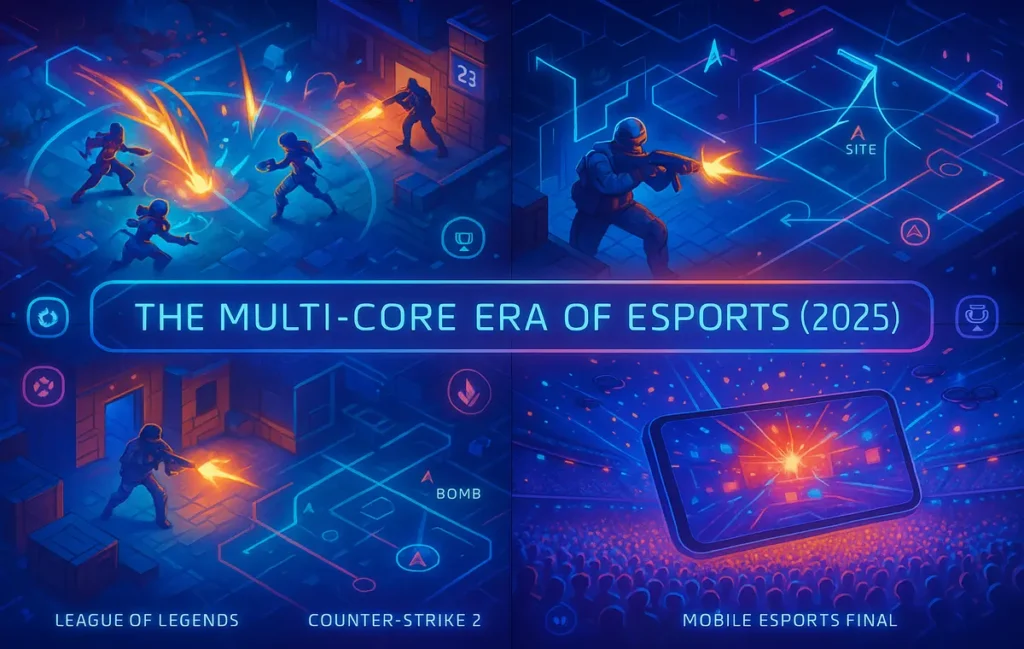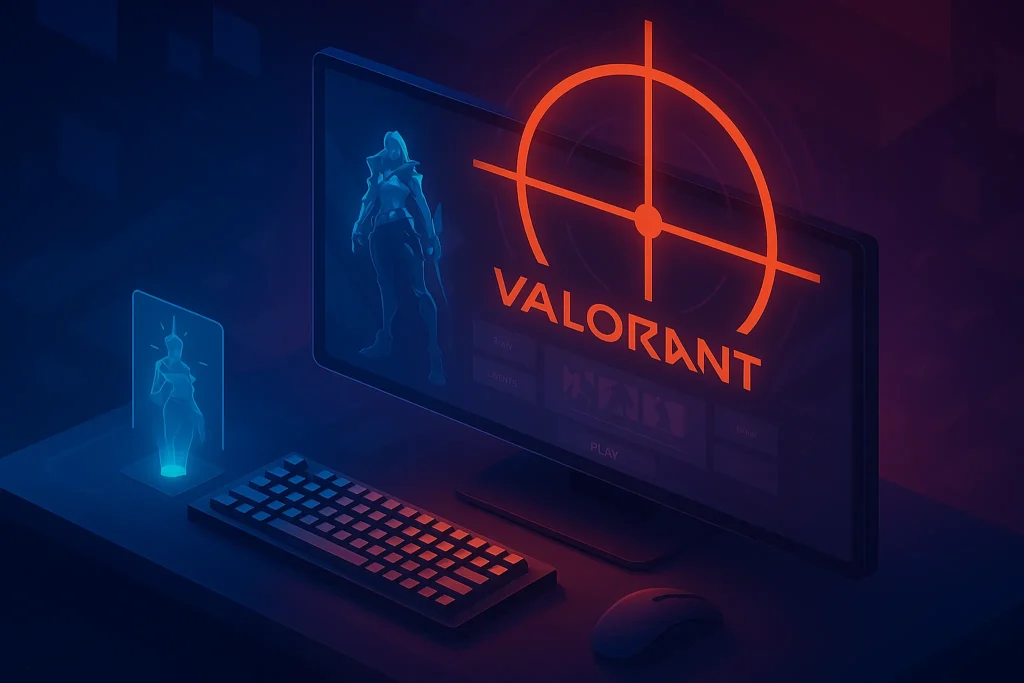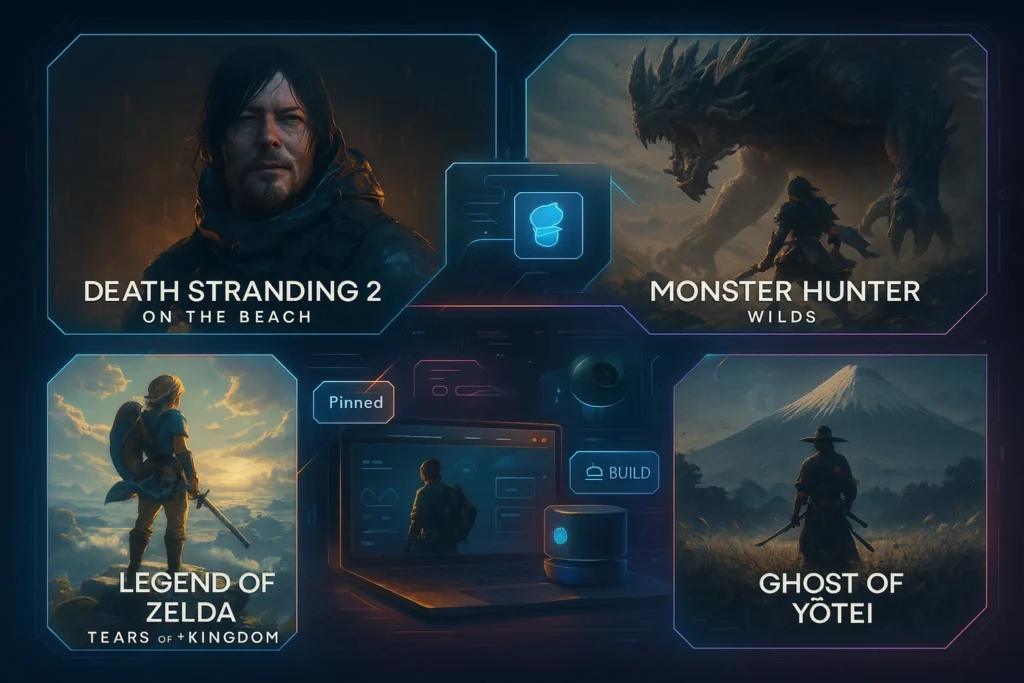🎮 Intro: From Niche Pastime to Global Stage
Esports no longer needs an introduction. The “is this real sports?” debate is ancient history; the real conversation in 2025 is about which titles sustain competitive momentum, audience loyalty, and meaningful career paths. The answer isn’t static, and it isn’t platform-agnostic. Some games thrive on strategic depth and legacy systems built over a decade. Others win with accessible spectacle, creator-driven culture, and seasonal content loops that keep viewers coming back. If you track the Esports Explosion narrative (see Esports Explosion) and pair it with the new crop of competitive releases from Top 10 Most Anticipated Video Games of 2025, you’ll spot a pattern: a handful of “anchor titles” define the calendar, while newer or regional-first titles push innovation (and viewership spikes) at the edges.
This pillar looks squarely at the games—not abstract industry trends or platform politics. We’ll explain why certain titles keep their thrones, how tactical shooters reshaped the space, why battle royales still matter, and what role mobile esports plays in the global pie. Along the way we’ll surface pragmatic advice for players, teams, and brands choosing where to invest effort. At NerdChips we care about the stack behind your success—tools, routines, and the right game choice—because in esports, title selection is strategy.
“Pick the title that fits your brain and your schedule. Switching later is expensive.” — @CoachKara on X
💡 Nerd Tip: If you’re deciding where to grind, weigh skill transfer, role scarcity, and regional ecosystem health—not just hype. It’s a career decision, not a weekend fling.
🏆 The Legends Still Strong: LoL, Dota 2, and CS2
League of Legends remains the crowd-control king of esports. What cements LoL’s power isn’t only Worlds’ spectacle—it’s the year-round regional structure that scaffolds player development and audience narratives. Leagues create a reliable cadence: fans know when to tune in, prospects know how to climb, and organizations can plan budgets. Riot’s stewardship—patch discipline, broadcast polish, and creator integration—keeps the meta alive without alienating veterans. The result is a stable ecosystem where storylines compound: rookies debuting in spring, rivalries maturing through summer, and Worlds resolving arcs with high emotional payoff. For players, mid-lane and jungle remain crowded fields, while high-IQ supports and durable top laners maintain enduring career windows.
Dota 2 is the stubbornly brilliant twin—less guided by a central league, more defined by community gravity and tradition. Its command of macro strategy, draft variance, and executional ceiling still produces some of esports’ most dramatic swings. Even as formats evolve, the legacy of massive international prize pools left a cultural imprint: “Dota equals skill theater.” Newcomers feel the barrier to entry, but veteran audiences love it for the same reason. For players and analysts, Dota remains a lab for comps, tempo, and resource calculus. If you’re choosing between LoL and Dota, think temperament: Do you prefer structured consistency (LoL) or sandbox volatility (Dota)? Both still mint stars and both reward teams who treat practice like a research program, not a routine.
Counter-Strike 2 took the foundation of CS:GO and modernized the tech while protecting the soul: clear win conditions, economy mind games, and tactile precision. The switch to CS2 sparked predictable turbulence—utility behavior, peeker’s advantage discourse—but the map-control ballet still reads beautifully on broadcast. CS thrives because it is spectator-legible even to casuals: guns, bombs, round wins, clutch narratives. It’s also a career-savvy choice if you value long-term skill transfer—mouse control and gamesense migrate well to other tactical shooters. For orgs, CS2 offers a deep talent pool and a huge scrim ecosystem; for analysts, it’s fertile territory for protocol design (execs, defaults, mid-round calls) that create a team identity.
“CS2 didn’t break the game; it exposed who had fundamentals and who had crutches.” — @IGLNotes
💡 Nerd Tip: When you hear “viewership dip” or “meta lull” around these legends, remember: league cadence and content ecosystems (co-streams, watch parties) smooth volatility. Long arcs beat one-off spikes.
🎯 The Tactical Shooters: Valorant’s Ascent and Overwatch’s Make-or-Break
Valorant is Riot’s carefully engineered answer to “CS-plus-abilities,” and by 2025 it’s more than an answer—it’s a career pipeline. The genius isn’t flashy maps or agent trailers; it’s the ecosystem design: tiered competition, clear promotion paths, and an unapologetic focus on narrative. Valorant also cracked the modern broadcast problem: make the action legible (replay systems, observer discipline) while letting creators animate the culture. For players, the meta rewards teams who plan playbooks like football, scripting set pieces and contingency trees instead of winging flashy outplays. Coaches who can translate VOD review into repeatable protocols become force multipliers. For brands, Valorant features a sponsor-friendly aesthetic with global reach and regional flavor.
Overwatch 2 sits at a strange intersection: still one of the most kinetic, highlight-friendly games to watch when well-cast, yet constantly renegotiating its league identity and design direction. In 2025, two destinies compete: a streamlined, regionalized competition closer to open circuits, or a lingering hangover from franchise-era expectations. The product on screen—when stable—remains delightful: ultimate economy mind games and teamfight geometry that rewards comms discipline. The challenge is trust: players need stability, fans need predictable arcs, and orgs need sound unit economics. If an Overwatch renaissance sticks, it will be because Blizzard commits to transparent balance cadence and a sane competitive architecture that welcomes tier-two and collegiate ecosystems.
For raw aimers deciding between Valorant and Overwatch 2, ask yourself what you love: angle discipline + info trading (Valorant) or teamfight tempo + ultimate combos (OW2). Both can yield careers, but the former currently offers clearer ladder-to-pro visibility.
“Valorant success looks boring on paper: tight defaults, trading discipline, and a binder full of set plays.” — @VODDoctor
💡 Nerd Tip: In tactical shooters, the cheat code is process. Build a weekly book of 3–5 set plays per map with labeled counters. When pressure hits, protocols beat vibes.
🌪️ Battle Royale & Beyond: Fortnite, Apex, and the Mobile Shockwave
Fortnite remains the heavyweight of hybrid identity: casual playground meets competitive proving ground. Its esports vitality in 2025 benefits from Epic’s eventization—tentpole tournaments stitched into a seasonal content rhythm. Competitive formats that mix solos, duos, and creative modes give both aimers and macro builders career options, while creator co-streams keep discovery pipelines rich. For emerging pros, Fortnite’s upside is accessibility: you can grow an audience while growing as a player, a combo few titles enable as naturally.
Apex Legends has carved a durable competitive niche with a rotations-and-positioning meta that rewards brains as much as beams. Apex esports looks best when the observer team nails the late-circle chaos, and 2025 production has matured. Apex remains alluring for squads who like macro pathing, utility layering, and mid-fight decision trees. For orgs, Apex offers consistent regional scenes and a fanbase that values team identity—not just star aim duels.
Then there’s the mobile wave: PUBG Mobile and Free Fire anchor a gigantic competitive audience across South and Southeast Asia, LATAM, and MENA. These circuits aren’t “lite” versions of PC esports; they are their own economies, with sponsor footprints and broadcast styles tuned to their regions. The gameplay emphasizes map control, tactical vehicles, and mid-range fights, producing spectacles that resonate in stadiums as vividly as on phones. For players in mobile-first markets, these titles may offer the most direct path to salaried competition.
“Mobile esports isn’t ‘training wheels.’ It’s where our city fills an arena.” — @ArenaCaster
💡 Nerd Tip: If your region is mobile-first, don’t fight gravity. Build mastery where scrim density and event cadence are strongest—you’ll progress faster and be more discoverable.
🚀 New Challengers in 2025: Hybrids, Fighters, and Cross-Platform Bets
The 2025 challenger class reflects three converging ideas. First, hybrid shooters that blend extraction, objective control, and class abilities—aiming to balance watchability with player agency. These titles rise if they can ship observer tools that decode chaos into story beats (who’s extracting what, who has tempo advantage, why a flank matters). Second, the fighting game resurgence continues post-rollback-netcode era. Polished tours, cross-play, and stronger new-player tooling mean that titles like modern fighters can sustain year-round circuits with narratives centered on player rivalries rather than team brands. Third, cross-platform competitive designs—where mobile, console, and PC scenes aren’t afterthoughts to one another—will grow. Expect challenger titles to localize formats aggressively: smaller-map, shorter-match variants in mobile; strategic, broadcast-friendly pacing on PC.
For players eyeing a new scene, treat challengers like startups. Validate three things: the developer’s seasonal roadmap, the openness of the competitive path (is there a real tier-two?), and the creator economy around it (are top creators adopting?). Without those, you’ll be grinding in a cul-de-sac.
💡 Nerd Tip: Early movers in new titles win if they own education: publish VOD breakdowns, starter playbooks, and scrim protocols. Teaching the meta builds your brand and locks in leadership.
🧩 The Esports Ecosystem in 2025: Prize Pools, Platforms, and Pacing
Prize pools remain a headline, but sustainability rests on repeatable narratives and unit economics. Titles with healthy circuits pair decent prize money with salaried stability, diverse sponsor slots, and co-stream licensing that multiplies reach through creators. Twitch still anchors live discovery, YouTube remains the VOD library of record, and Kick/regionals add niche bursts. The biggest viewership unlock of the last two years has been watch parties—tabbing top creators into official streams to add context, humor, and team-biased passion. It’s messy, but sticky.
On the business side, we’re seeing leaner org models: smaller rosters per title, staff who can flex across coaching, analytics, and content, and a bias toward high-leverage content assets (behind-the-scenes, mic’d-up, practice-room stories). Teams that survive focus on talent development (academy and collegiate pipelines) and IP ownership (original shows, training products), not just match days. For brands, the playbook is shifting from “logo on jersey” to “story sponsor”—owning a segment, a doc series, or a pro’s personal development arc.
If this macro lens intrigues you, cross-reference with culture and platform trends in The AI Revolution in Gaming and the social layer in Top PC Games to Play with Friends Online and Best Multiplayer Horror Games to Play with Friends, which showcase how friend-group gravity drives discovery even for competitive titles.
“Viewership is the byproduct of ritual. Give me the same timeslot, the same rivalry, and a reason to care.” — @NumbersOnEsports
💡 Nerd Tip: Treat your team or creator channel like a mini network. Program it: scrim shows on Tuesday, VOD labs on Thursday, match days on weekends. Ritual builds retention.
🛡️ Challenges & Risks: Burnout, League Math, and Meta Shocks
Player burnout is the quiet tax of 2025. Scrim blocks are longer, seasonal churn forces constant re-skilling, and social pressure to stream on top of competing can be punishing. Teams that endure protect sleep, nutrition, and mental cycles with the same seriousness as strat sessions. Sustainability of leagues is the second risk: when budget math breaks—travel, salaries, production—the scene contracts, no matter the game’s quality. Decoupling tier-two health from top-league volatility is critical: open qualifiers, regional cups, and college circuits must not be window dressing.
Finally, shifting metas can reshape careers overnight. Smart players hedge by mastering portable fundamentals (crosshair placement, comms frameworks, timing theory) instead of abusing patches. Smart devs mitigate pain with transparent balance roadmaps and test servers that give teams time to adapt.
💡 Nerd Tip: Build a meta-neutral practice core: 60% fundamentals you’ll need forever, 30% comp-specific protocols, 10% experimental tech. When patches hit, you bend—not break.
⚡ Build Your Esports Starter Stack
Get our curated toolkit: VOD review templates, scrim tracker, content calendar for player-brand growth, and a weekly set-play planner for tactical shooters.
🗺️ Title Fit Matrix (Quick Decision Table)
| Title | Core Skill Profile | Team Size | Spectator Clarity | Region Strength Highlights | Ecosystem Shape |
|---|---|---|---|---|---|
| League of Legends | Macro rotations, draft prep, fight setup | 5 | High (with casting) | KR, CN, EU | Structured leagues + Worlds |
| Dota 2 | Sandbox strategy, resource calculus | 5 | Medium (complexity) | CIS, SEA | Event-driven, community heavy |
| CS2 | Angle discipline, economy mind games | 5 | Very High | EU, BR, NA | Open circuits + majors |
| Valorant | Set plays, info trading, utility layers | 5 | High | NA, EU, APAC | Tiered circuits + champs |
| Overwatch 2 | Teamfight tempo, ultimate economy | 5 | Medium-High | KR, NA | League-to-circuit transition |
| Fortnite | Mechanics + macro rotations + creation | 1–2–3 | Medium | Global | Seasonal tentpoles |
| Apex Legends | Rotations, positioning, mid-fight calls | 3 | Medium-High | NA, EMEA | Regional leagues + LANs |
| PUBG Mobile / Free Fire | Mobile aim + tactical rotations | 4 | High (regional) | SEA, SA, MENA | Regional circuits, stadium appeal |
📋 Roadmap for Aspiring Pros (One-Page Checklist)
-
Define a primary title and a two-year horizon; avoid split-grinding.
-
Build a practice OS: daily aim/mechanics block, team protocols, VOD lab with notes.
-
Publish one educational asset per week (VOD breakdown, strat doc) to grow discoverability.
-
Join a serious scrim network; track scrim ELO and improvement metrics.
-
Protect recovery: sleep 8h, schedule off-blocks, rotate high/low cognitive loads.
📬 Want More Esports Strategy Like This?
Join our free newsletter for weekly breakdowns on game choice, practice systems, and creator growth—engineered by the NerdChips team for ambitious players and analysts.
🔐 100% privacy. No noise. Just value-packed insights from NerdChips.
🧠 Nerd Verdict
The 2025 esports map is multi-core: LoL, Dota 2, and CS2 anchor the calendar; Valorant owns the playbook meta; Fortnite and Apex keep BRs hot; mobile esports defines entire regions. The “winner” isn’t a title—it’s the ecosystem design that converts casual hype into career paths. If you’re a player or org, your edge is process: pick a lane, program your rituals, and turn your learning into public IP. That’s how you compound—skill, audience, and opportunity—no matter which game you play.
❓ FAQ: Nerds Ask, We Answer
💬 Would You Bite?
If you had to pick today, would you grind a legacy anchor (LoL/CS2) for stability or jump into a high-velocity challenger for faster brand growth?
Tell us your region; we’ll map the healthiest path. 👇
Crafted by NerdChips for players, coaches, and teams who want their practice to compound—and their stories to travel the world.



